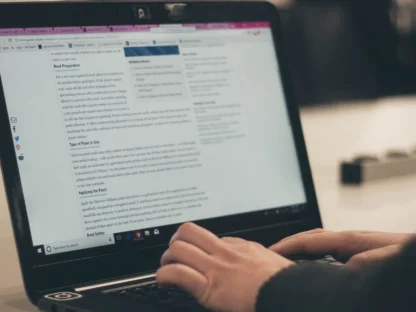Proofreading Tips
Whether you’re just getting started or are an experienced proofreader, there’s always something new to learn. That’s where our blogs come in! We've got expert advice on spelling, grammar, punctuation, referencing, proofreading different types of writing (from creative to business and academic), and much more!
-

Proofreading Tips: Working With Religious Terms
Proofreading Tips: Working With Religious Terms
Published Feb 03, 2019
Last Updated Oct 04, 2023And lo, the proofreader corrected the spelling and the grammar, and she did separate sentence from sentence with proper punctuation. For six days she did this, and on the seventh day she did this also, for she worked freelance and could not afford to rest. Don’t worry, we haven’t changed our style to reflect the […]
-

How to Proofread Negative Prefixes in English
How to Proofread Negative Prefixes in English
Published Aug 07, 2018
Last Updated Nov 25, 2024English is a magpie language. It picks up shiny words wherever it can, and it doesn’t care how disorganised its rules become in the process. Or should that be ‘unorganised’? Take prefixes, for instance. We have de-, dis-, un-, and in-, all of which signify that something isn’t the case. And they’re not the only […]
-

Capitalisation: Compass Points and Titles
Published Jul 02, 2018
Last Updated Aug 07, 2023In our time training proofreaders, we’ve noticed that the subtleties of capitalisation can sometimes confuse even the best students. So, today, we’re going to look at two tricky capitalisation issues that might trip you up: compass points and titles. Compass Points and Directions It is a common misconception that the four compass directions should always […]
-

Formatting Titles in Academic Documents
Published May 18, 2018
Last Updated May 16, 2023Although proofreading and formatting are different, they overlap in some respects. For instance, when an essay names a source in the text, it is standard for the proofreader to ensure its title is appropriately formatted. Let’s take a look at how formatting titles works. Italics and Quote Marks Formatting titles in the text of a […]
-

A Brief Guide to Proofreading for Websites
Published Apr 26, 2018
Last Updated May 28, 2025Is proofreading for websites different from other types of proofreading? The answer is yes! You can’t always apply the same proofreading techniques and guidelines to different kinds of documents. Academic proofreading, for instance, is very different to proofreading web copy. This is one reason why proofreaders haven’t yet been replaced by robots. Crucially, reading on […]
-

Citing Edited Books in Chicago Style
Published Apr 13, 2018
Last Updated Nov 28, 2024Sound the celebratory trombone and strike the ritual tambourine. It’s referencing time again! And today we’re looking at how to cite edited books again. In this post, we’re going to look at Chicago referencing. There are two versions of this system: Author–date citations and a reference list (more common in the sciences) Footnotes and a […]
-

13 Latin Terms Every Proofreader Should Know
Published Mar 26, 2018
Last Updated Nov 25, 2024You might want to throw on some Ricky Martin before you read this because we’re going Latin. Unfortunately, it’s not going to be as sexy as Señor Martin was at his hip-gyrating peak. In your proofreading career you will encounter several Latin terms, and you may already be familiar with many of them. However, it’s […]
-

Top 5 Formatting Tips for Proofreaders
Published Mar 15, 2018
Last Updated Jan 02, 2025If there’s one thing that this blog has said ad nauseam, it’s that being a proofreader isn’t just about having good spelling, grammar, and punctuation. Take formatting, for example. It’s not proofreading, but a lot of jobs aimed at proofreaders require it and a lot of employers will expect you to format documents professionally. For […]
-

Top 3 Justifications for Sentence Fragments
Top 3 Justifications for Sentence Fragments
Published Mar 01, 2018
Last Updated Nov 19, 2024This post is very. Let that sink in for a moment. Deep, isn’t it? Unfortunately, it’s also poor grammar. As proofreaders, we know that incomplete sentences are usually unacceptable. But there are circumstances in which a partial sentence might make sense. Thus, here are our top three reasons to leave sentence fragments be. 1. For […]
-

All Together Or Altogether?
All Together Or Altogether?
Published Feb 21, 2018
Last Updated Nov 19, 2024The classic movie Airplane! plays on the similarity between the terms all together and altogether. In that film, the protagonist discovers that pressing the autopilot button is counterproductive. But when he explains this and uses the word altogether to mean entirely, his companions respond by echoing his words all together. And, lo, we immediately see […]
